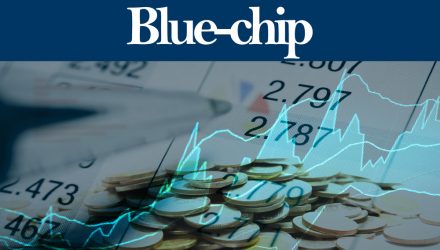Active investing had a banner year in 2023, with active ETFs picking up major flows relative to their AUM. Active strategies benefit from mutual fund conversions and a broader appreciation of actives’ ability to ride volatility and seek out performance. In a market environment that offers plenty of upsides – think back to how well mega-cap tech performed last year – but may require close attention. An active blue chip ETF, then, could appeal as an option in 2024.
See more: Active ETF TCAF Hits $700 Million in Half a Year
The T. Rowe Price Blue Chip Growth ETF (TCHP) presents an intriguing option for doing so. The strategy charges a 57 basis point (bps) fee to actively invest in “blue chip” firms. Blue chip investing involves seeking out, of course, “blue chip” firms – so which firms does that describe? Investopedia describes a blue chip as a well-established, recognized, financially sound firm.
Of course, that latter factor plays a big role, with investors perhaps wanting to avoid staid, overburdened large firms. In a year like 2024, specifically, there is an appetite for growth-oriented, reliable names. With uncertainty around rate cuts, particularly, firms that can still offer robust returns even if markets don’t’ get “all” the rate cuts they wanted can appeal. An active blue chip ETF like TCHP could then be a great option.
Impressing With TCHP
TCHP, which hit its three-year ETF milestone this past August, returned 50.1% in 2023. Those returns are impressive for a blue chip-focused strategy, especially when considering the narrative entering 2023 focused so heavily on a potential recession. It’s research-based, and its active approach may have helped set it apart, with that return outperforming both its ETF Database Category and FactSet Segment averages.
So, how does it invest? It looks for firms with leading market positions, seasoned management, and the potential for above-average earnings growth. Its managers bring their experience and ability to outmaneuver volatility and seek out performance to the strategy. By taking a closer look at firms that fall into the “blue chip” category, TCHP can find those firms that its managers believe are more likely to do well with or without rate cuts, whereas an indexed strategy may not be able to scrutinize or adapt as quickly.
Taken together, an active blue chip growth brings a potent combination of ideas to an uncertain 2024. Active could continue to offer a strong toolset this year, and when added to a fundamentals-driven search for blue chips, it could provide a solid option whether rate cuts hit or not.
For more news, information, and analysis, visit the Active ETF Channel.








